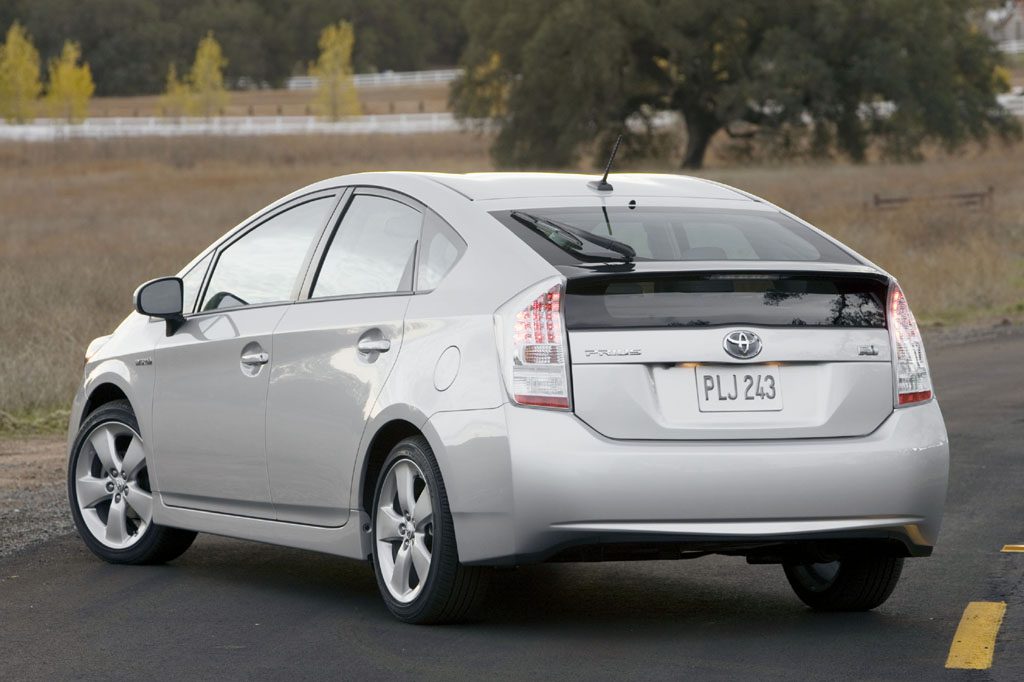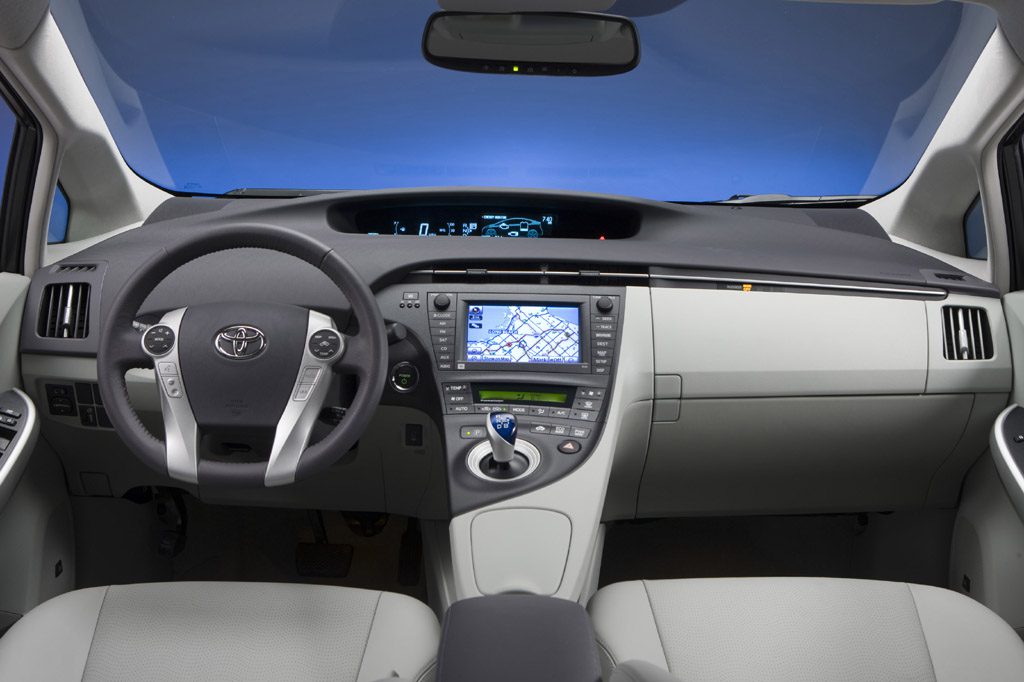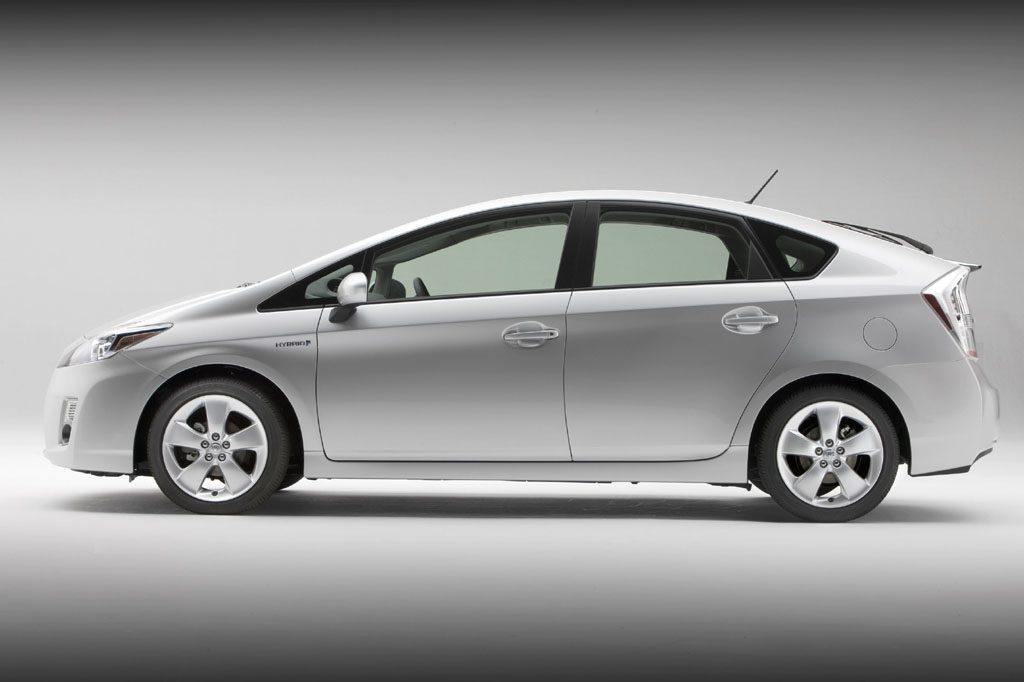| Midsize car; Built in Japan |
|
|
| Good condition price range: $4,600 – $18,200* |

2010 Toyota Prius front

2010 Toyota Prius rear

2010 Toyota Prius interior

2010 Toyota Prius profile
| Pros: |
|
| Cons: |
|
What’s most surprising about the Prius is what a fine midsize car it would be even if it didn’t achieve such terrific fuel economy. When new, Prius won Consumer Guide Best Buy awards each year from 2010 through 2014. Its only real drawbacks are minor powertrain idiosyncrasies, slightly compromised rear visibility, and down-market interior materials. None of these negatives should keep you from putting this impressive Toyota on your shopping list.
Overview
The midsize Toyota Prius was redesigned for 2010, getting freshened styling, more power, higher EPA fuel-economy figures, and a host of newly standard and optional features. First introduced a decade earlier in its initial form, this gas/electric hybrid was a five-passenger, four-door hatchback that teamed a four-cylinder engine with a battery-powered electric motor and a continuously variable transmission (CVT), which behaved much like an automatic. Toyota’s hybrid system allowed Prius to run on one or both of its power sources to balance acceleration and fuel economy. No plug-in charging is ever required. Five models were available, called I, II, III, IV, and V. Note that the Prius I was available for fleet customers only. Standard safety features included antilock braking, traction control, an antiskid system, curtain-side airbags, front-side airbags, and a driver’s knee airbag. The V model had LED headlights, foglights, and 17-inch alloy wheels (versus the 15s on other models). Newly available features included an adjustable-height driver seat, heated front seats, a telescopic steering column, and Toyota’s Safety Connect assistance system. Also newly offered were some high-end features usually found only on vehicles sold by Toyota’s Lexus division, including adaptive cruise control, Lane Keep Assist with lane-departure warning, and Intelligent Parking Assist that provided hands-free parallel parking. Other new options included a solar roof panel that could power a ventilating fan when the car was parked, and electric air conditioning that could be turned on for up to three minutes to cool down the interior before getting in. Prius competed against the new Honda Insight, Ford Fusion Hybrid, and Chevrolet Malibu Hybrid as well as diesel-engine Volkswagens.
Yearly Updates
| 2011 Prius For its second season in redesigned form, the Prius was unchanged. |
| 2012 Prius For 2012, the Toyota Prius added a Plug-In version of the otherwise unchanged hatchback that has an electric-only range of about 11 miles; after that, it runs primarily on the gas engine like any other hybrid. |
| 2013 Prius Prius continued into 2013 with the addition of a new “Persona Special Edition” trim. Other models were unchanged. |
| 2014 Prius There were no significant changes for the 2014 Prius. |
| 2015 Prius The 2015 Prius saw only one update of note: a Special Edition appearance package with dark-finish 17-inch wheels and other unique trim features. |
